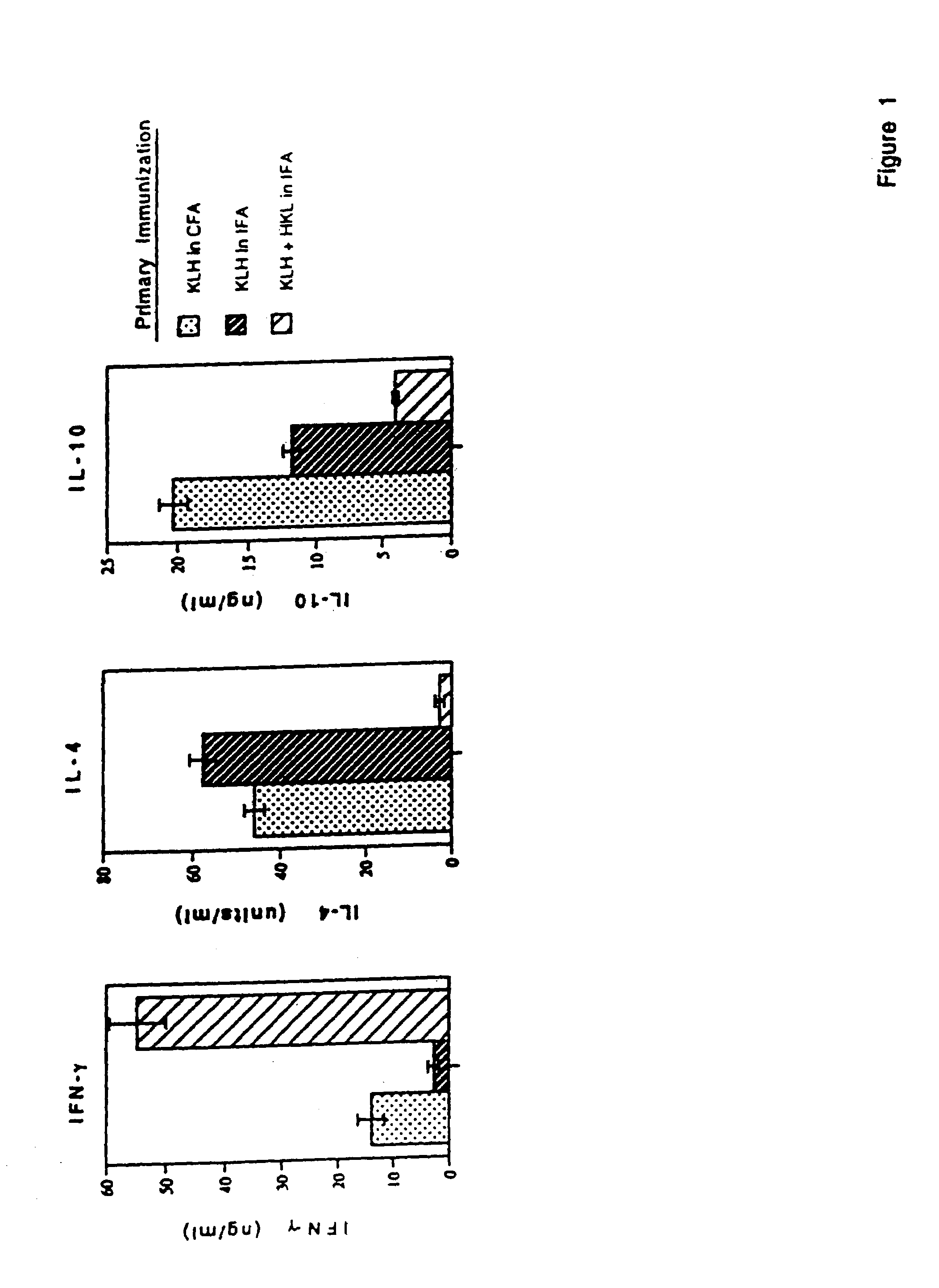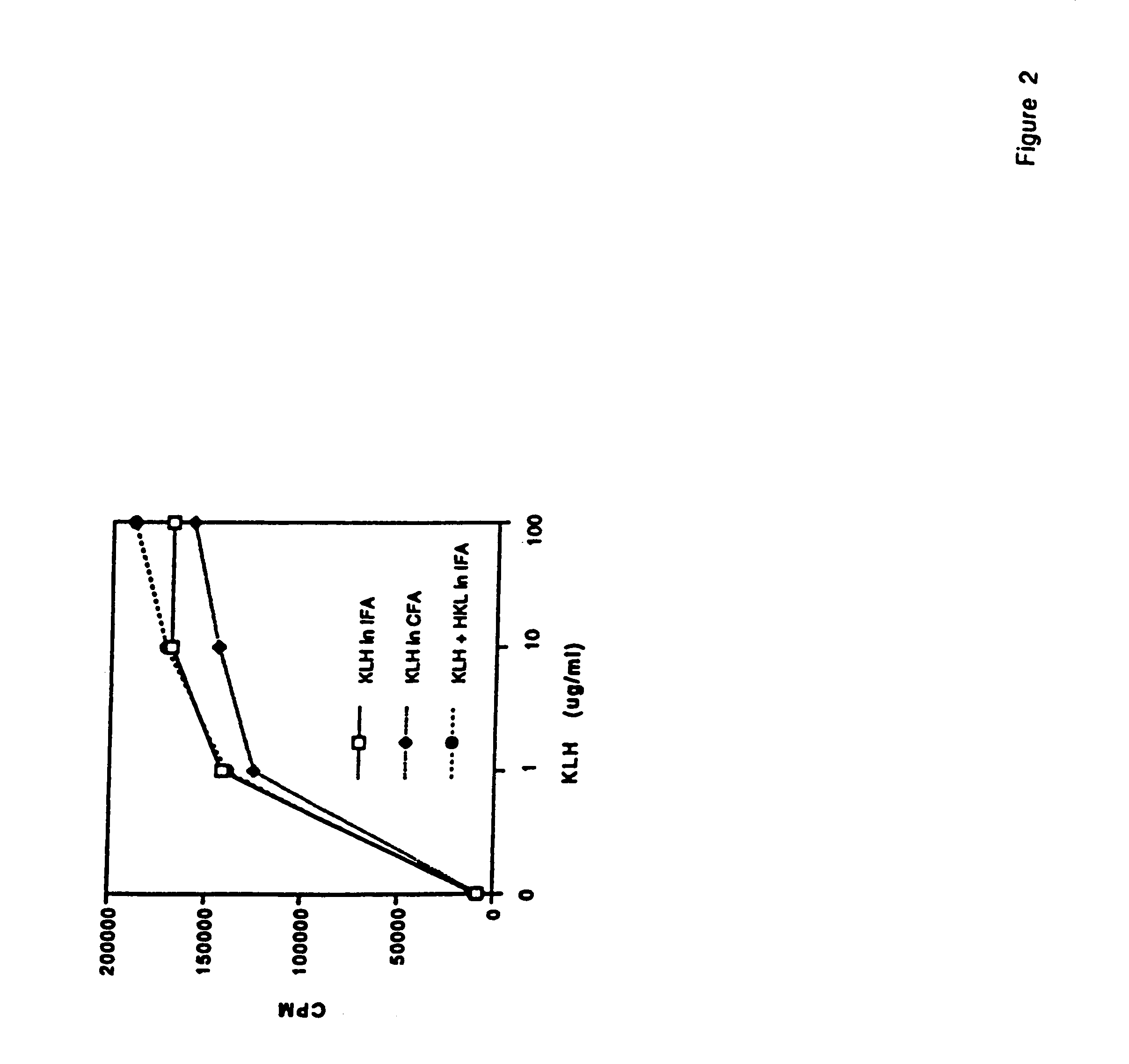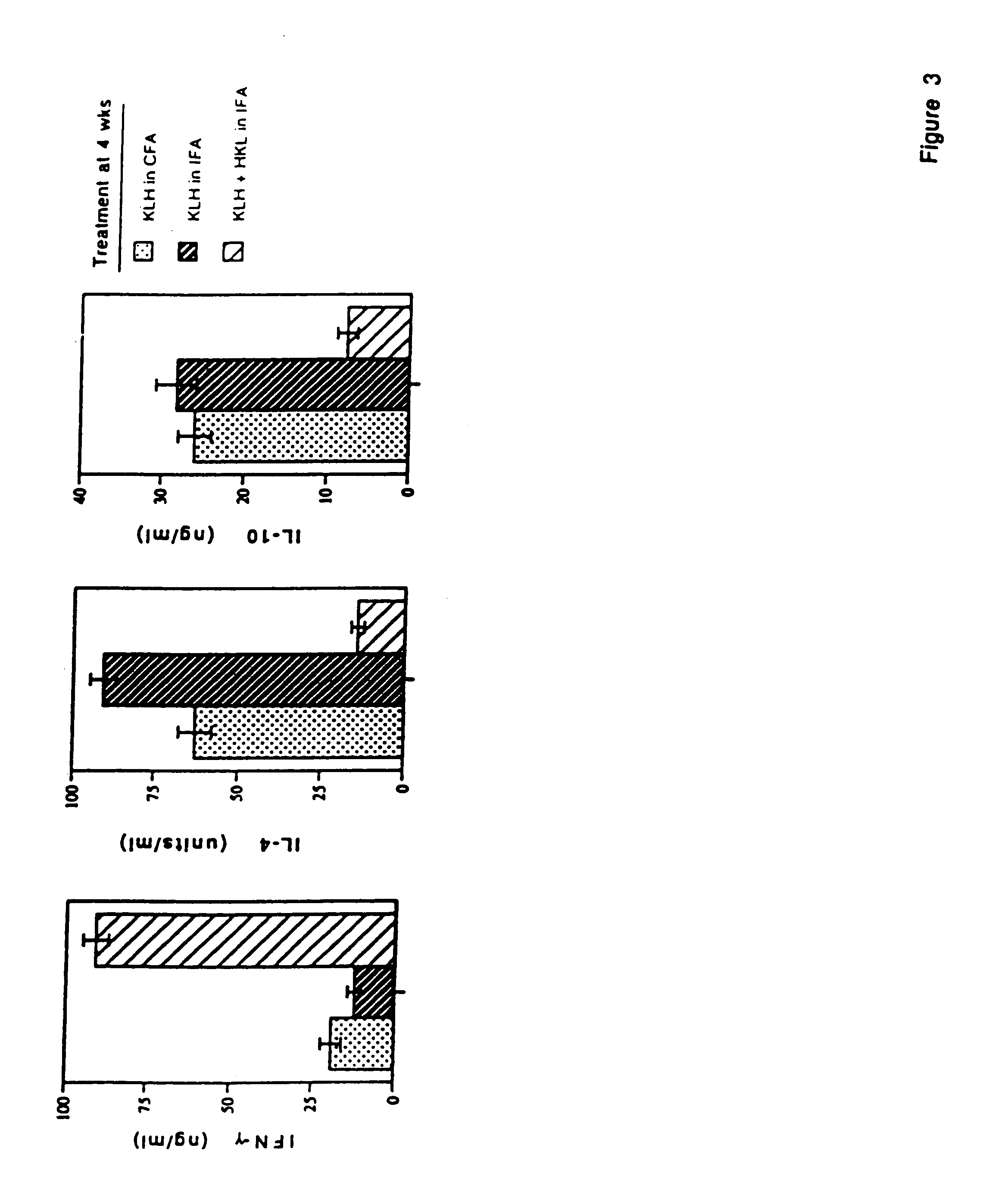Adjuvant therapy
a technology of adjuvant therapy and ischemic acid, which is applied in the direction of antibody medical ingredients, peptide/protein ingredients, immunological disorders, etc., can solve the problems of low ability to control man, death from asphyxia, and high susceptibility of man to anaphylaxis, and achieve the effect of reducing the production of antigen-specific ig
- Summary
- Abstract
- Description
- Claims
- Application Information
AI Technical Summary
Benefits of technology
Problems solved by technology
Method used
Image
Examples
example 1
Conversion of Cytokine Profiles Using L. monocytogenes as an Adjuvant
[0074]Listeria monocytogenes is used as an adjuvant to generate a specific immune response characterized by high antigen-specific IFN-γ production, and large quantities of specific IgG2a antibody. Moreover, vaccination with heat killed Listeria and antigen during an established Th2 dominated, antigen-specific immune response resulted in significant reductions in IL-4 and IL-10 synthesis, increases in IFN-γ production, and reduction in antigen-specific IgE. Reduction in IL-4 and IL-10 synthesis did not reduce the intensity of the antigen-specific immune response, since T cell proliferation to the antigen was not reduced. Neutralization of IL-12 activity with anti-IL-12 mAb at the time of boosting with antigen blocked reduction of IL-4 and enhancement of IFN-γ production, indicating that HKL-induced IL-12 was responsible for the adjuvant effects on cytokine production. This technique may be useful in clinical situati...
example 2
Vaccination with Heat Killed Listeria as Adjuvant Reverses Established Allergen-Induced Airway Hyperreactivity and Inflammation
[0101]In murine model of asthma, HKL as an adjuvant given once with antigen prevented the development of airway hyperreactivity and airway inflammation in OVA-immunized BALB / c mice and significantly reduced airway eosinophilia and mucus production. Moreover, when given late after allergen-sensitization, and single dose of HKL with antigen reversed established airway hyperreactivity and reduced air inflammation. The inhibitory effect on airway hyperreactivity depended on the presence of IL-12 and on CD8+ T cells, was associated with an increase of the IL-18 mRNA expression, and required close association between HKL and the antigen. Thus, these results demonstrate that HKL as an adjuvant very effectively promotes protective immune responses in the respiratory tract, and down-modulates ongoing Th2-dominated responses, indicating that HKL as an adjuvant for all...
PUM
| Property | Measurement | Unit |
|---|---|---|
| body weight | aaaaa | aaaaa |
| body weight | aaaaa | aaaaa |
| concentration | aaaaa | aaaaa |
Abstract
Description
Claims
Application Information
 Login to View More
Login to View More - R&D
- Intellectual Property
- Life Sciences
- Materials
- Tech Scout
- Unparalleled Data Quality
- Higher Quality Content
- 60% Fewer Hallucinations
Browse by: Latest US Patents, China's latest patents, Technical Efficacy Thesaurus, Application Domain, Technology Topic, Popular Technical Reports.
© 2025 PatSnap. All rights reserved.Legal|Privacy policy|Modern Slavery Act Transparency Statement|Sitemap|About US| Contact US: help@patsnap.com



